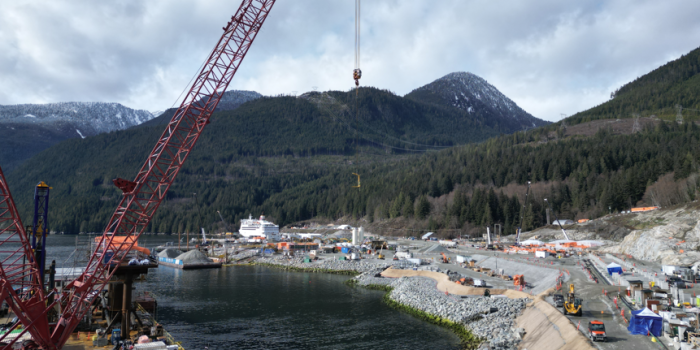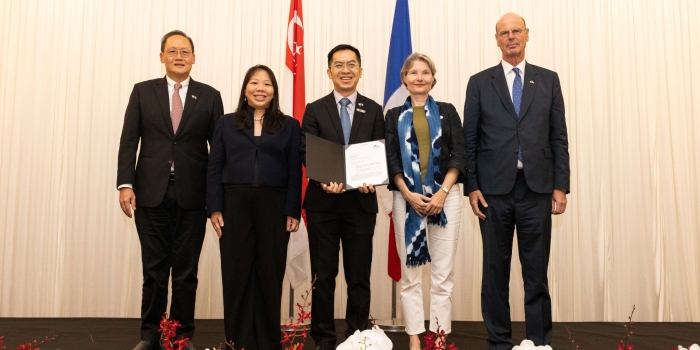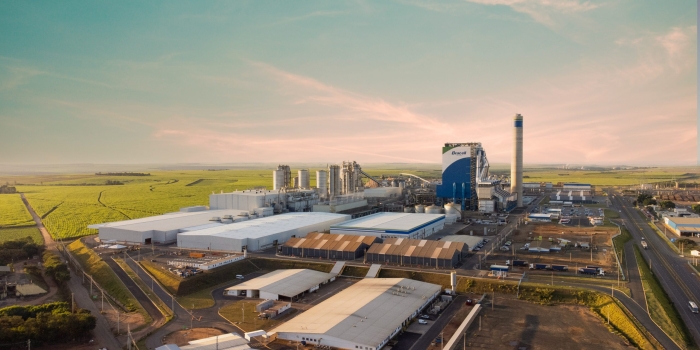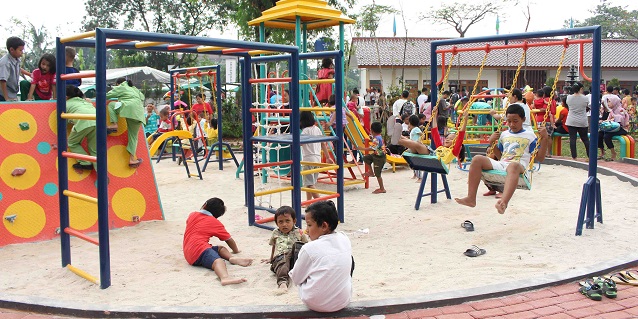At the new facility in British Columbia, Canada, Woodfibre LNG is setting a new bar for minimising environmental impact as the first net zero LNG facility worldwide. This is achieved by a combination of emission-reducing strategies and nature-based carbon offsets. It’s not just an aim for future operations, this is a goal we are already working towards during the construction phase.
What is Net Zero?
Net zero emissions refer to achieving an overall balance between greenhouse gas emissions, and those removed or offset. While some emissions may still be produced, net zero can be achieved by offsetting emissions through projects like forest conservation—planting new trees or protecting trees that would otherwise be logged.
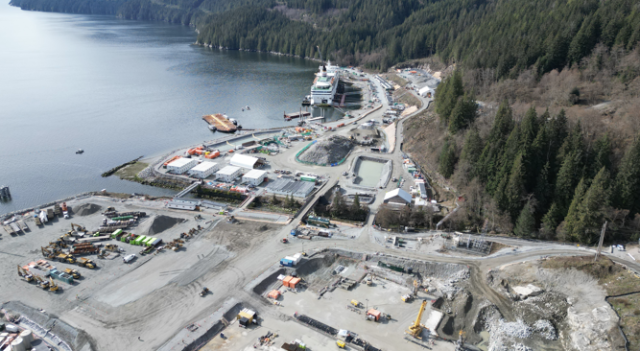
Construction of Woodfibre LNG underway in British Columbia, Canada.
Core Emission Avoidance
By utilising renewable hydroelectricity and best-in-class technologies, Woodfibre LNG aims to achieve a carbon intensity of 0.04 tonnes of CO2 per tonne of LNG produced, significantly below the global average.
One cornerstone of emissions avoidance is the E-Drive system. This system uses electric compressors powered by renewable hydroelectricity for liquefaction. By switching to electric power, Woodfibre LNG is able to cut projected emissions by over 230,000 tonnes of CO2e per year—the equivalent to 70,000 cars.
Other measures include re-liquefying boil-off gas. During the LNG production process, instead of letting gas naturally evaporate into the atmosphere, we will capture and re-liquefy it, further avoiding over 11,000 tonnes of CO2e per year.
On top of that, in accordance with the Squamish Nation Environmental Assessment Agreement Process, we have switched from seawater cooling, which can have a warming effect on surrounding marine environments, to an air-cooled system powered by hydroelectricity. This change decreases emissions by an additional 3,000 tonnes of CO2e annually.
Offsetting to Complete the Puzzle
Any remaining emissions are offset by carbon credits. A carbon credit is one metric tonne of carbon dioxide that has been avoided or absorbed, compensating for emissions produced elsewhere. Woodfibre LNG invests in local projects developed in collaboration with First Nations, ensuring designated areas of forest are protected, allowing the trees to capture and store carbon over time.
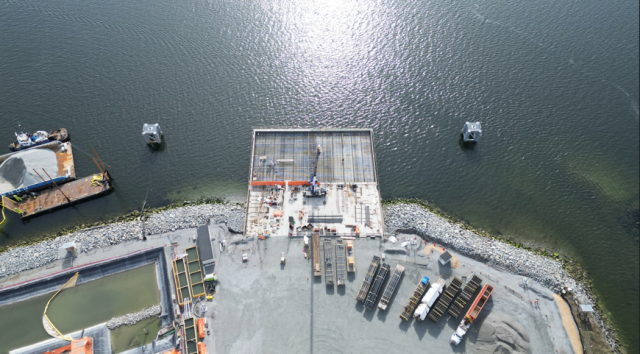
Marine off-loading facility at Woodfibre LNG, close to completion.
All of these projects to reduce carbon footprint are validated by Brightspot Climate, ensuring that the reporting meets British Columbia’s stringent requirements, and supports accurate and transparent reporting. Woodfibre LNG’s roadmap to net zero represents a significant milestone in the global energy transition, demonstrating pioneering efforts in emissions management in the LNG sector.



